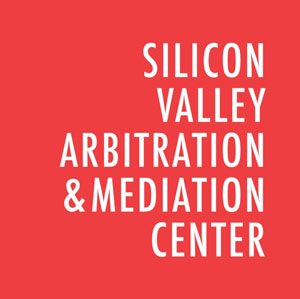One of my roles at SVAMC is to advise on tech ADR from the perspective of my generation. As a recent law school graduate, I often explain ADR and its unique advantages over litigation, frequently citing the benefits of time and cost efficiencies. As a “Millenial,” what is particularly compelling to me is that ADR gives us choices. Lawyers call it party autonomy- it means that you, not the court system, dictate the terms of your dispute resolution.
Having choices is important to me, and others like me, who are building the next generation of tech companies. In a world fluttering with new technologies and business partnerships, companies are faced with the potential of exponential growth. They are also faced with the potential for highly technical disputes that the court system is not well-equipped to handle. ADR offers us options and flexibility that are not available in the courts.
Here are some quick examples:
The Choice to Select Your Dispute Resolver. When parties draft an ADR clause they give themselves the option of mutually selecting the arbitrator or mediator who will help resolve any disputes. Instead of presenting their case to a judge, who may focus most of his or her time on criminal cases, the parties can choose an ADR expert with years of experience in their particular industry. This feature makes party presentations less consumed by explaining the technology and more focused on the application of law to facts.
The Choice to Select the Law and Place for Resolution. Unlike litigation, in ADR parties choose the law that governs the resolution of their dispute and where dispute resolution will take place. This gives the parties the ability to choose a developed set of laws and an agreeable forum. It is especially useful for companies that operate internationally and are unfamiliar or uncomfortable with other nation’s laws.
The Choice to Design Your Own Dispute Resolution Process. In my opinion, the most compelling aspect of ADR is the ability to collaboratively tailor the entire process. Parties can mutually select the institution to administer the process, decide the format and timing of hearings, the availability and depth of evidence disclosures, and even combine different types of ADR. For example, with Med-Arb parties have the opportunity to settle some or all of the issues at the informal mediation stage before submitting the most contested issues to an arbitrator.
ADR lets you resolve issues in a way that works best for you. Mark Zuckerberg put it well when he said, “…a simple rule of business is, if you do the things that are easier first, then you can actually make a lot of progress.” By putting an ADR clause in contracts, parties can develop their own dispute resolution mechanism that takes into account varying facets of their contractual relationship, the complexities of their respective technology, and the types of disputes that could arise. This type of mutually conducive optimization is not available in a litigation setting.
I’m excited to be working with SVAMC because its vision and goals align with my own−bringing efficient, effective, and groundbreaking tech dispute resolution to Silicon Valley. It’s tailor-made dispute resolution for an innovation-driven environment.
So that’s my generational perspective. Please feel free to reach out to me with any questions you have or any topics you’d like to discuss.
– Rachel Koch
rachel@siliconvalleyarbitration.org
